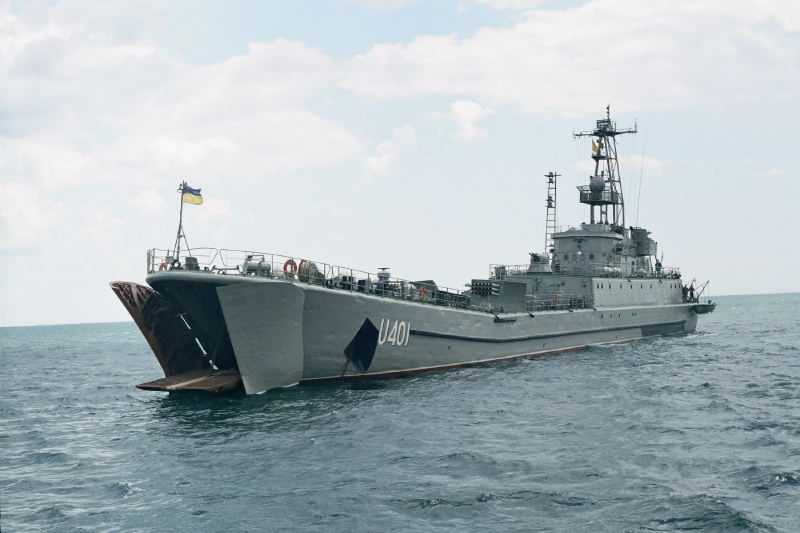Polish Navy
The Polish navy is relatively small and focused on sea control and amphibious operations within the Baltic. Largely equipped and trained by the Soviet Navy, the PMW (Marynarka Wojenna Polskiej or Polish War Fleet) essentially forms an extension to Soviet Baltic Sea Fleet. Just as the Romanian and Bulgarian fleets were designed to augment the Soviet Black Sea Fleet, the Polish and previously the East German Fleet were the same in the Baltic, although supposedly interdependent. When operating alone, there are significant gaps in capabilities and the new order in the Baltic has left both the Soviets and Pols struggling to mitigate. Compounding the capability problem, the Polish fleet has largely been languishing for the past 18 months, suffering from the internal strife which has riddled the country, although a core of dedicated and motivated naval officers maintained basic levels of training, there has been little motivation and even less funding for exercises involving more than a few ships since 1991.
The prefix for Polish warships is ORP (Warship of the Republic of Poland) and the fleet is based at two key locations; Gdynie-Oksywie is the main base for ships, submarines, training and aviation, while Świnoujście near the German border is used for coastal defence ships.
Destroyer (DDG)
The one large combat ship is a Modified Kashin class DDG ORP Warszawa 271, formerly the Smelyy in the Soviet Navy it was sold to Poland in 1988 to replace the Kotlin Class ship of the same name. A well rounded ship with good anti-surface, air defence and anti-submarine (ASW) capabilities, the main drawback is the lack of a hangar for a helicopter but in the restricted waters of the Baltic, the landing platform is considered sufficient.
| Class | Pennant | Name | Status | Remarks |
|---|---|---|---|---|
| Kashin Mod | 271 | Warszawa | Active |
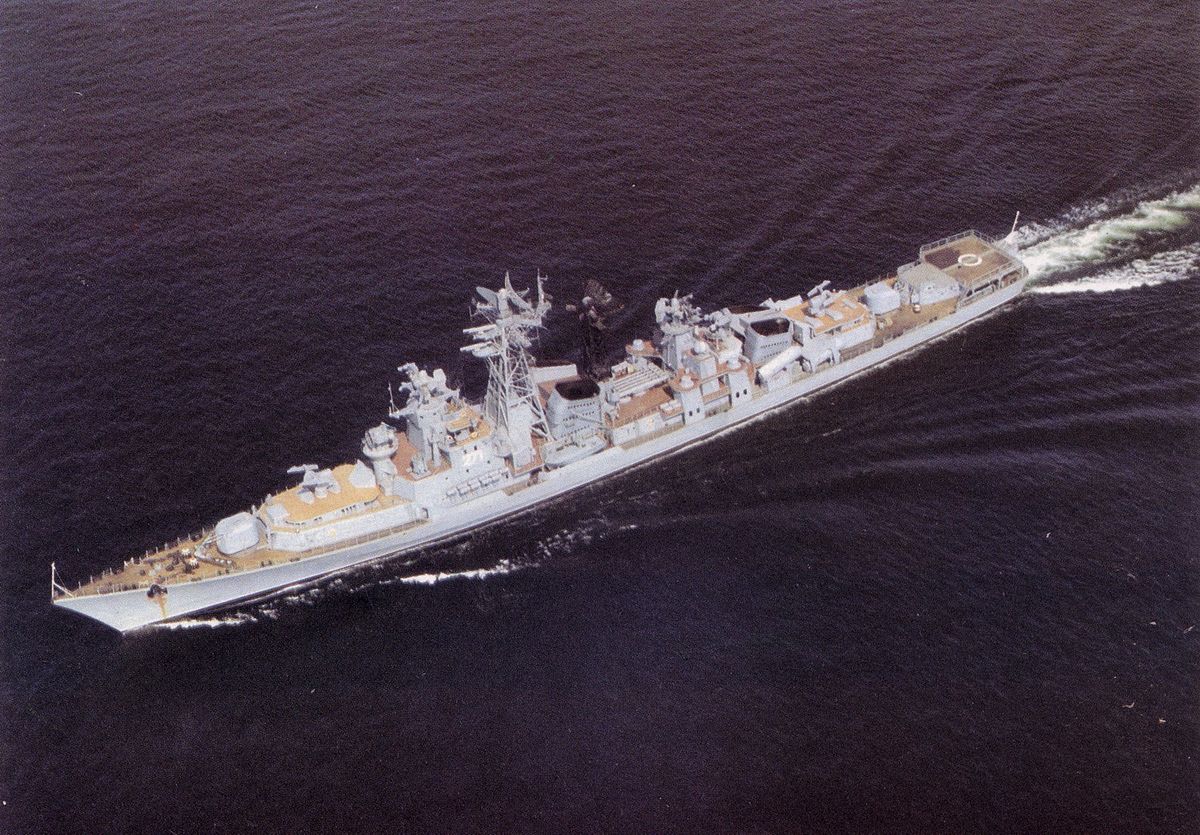
Submarines
Kilo Class: The single Kilo class (Project 877E) was transferred to Poland in 1986 and is the centerpiece of the submarine force. In the shallow, noisy waters of the Baltic Sea this boat is a very dangerous opponent.
| Class | Pennant | Name | Status | Remarks |
|---|---|---|---|---|
| Kilo | 291 | Orzel | Active |
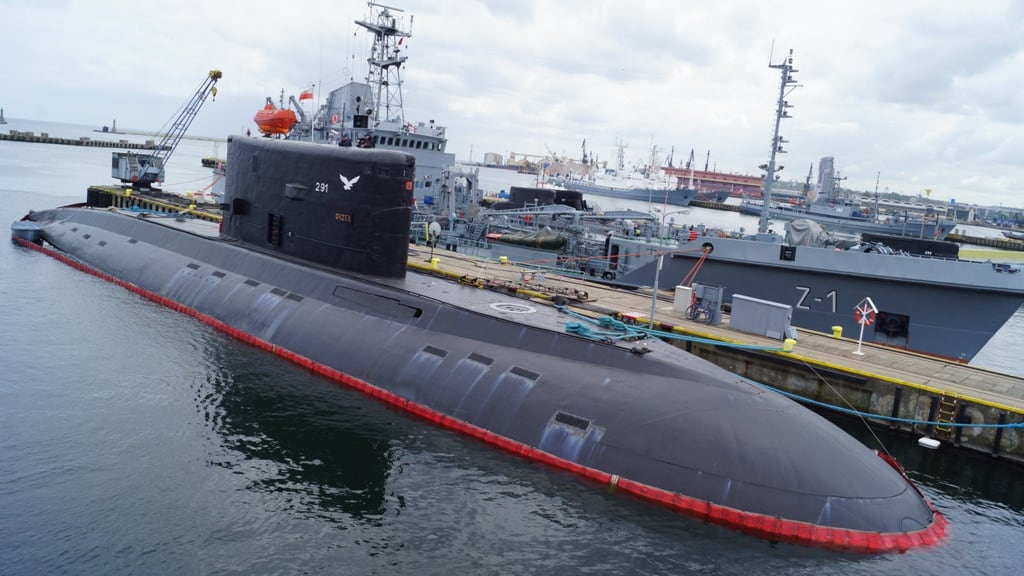
Foxtrot Class: Two Foxtrot class (Project 641) were transferred to the Polish Navy in 1987, these boats are far less capable than the Kilo but still able to operate effectively due to the noisy confines of the Baltic.
| Class | Pennant | Name | Status | Remarks |
|---|---|---|---|---|
| Foxtrot | 292 | Wilk | Active | |
| 293 | Gryf | Active |

Whisky V Class: The four boats of this class were transferred to the Polish Navy in 1965 and retied into reserve in 1985 as the newer boats arrived. It will take 60-90 days to make these boats operational again.
| Class | Pennant | Name | Status | Remarks |
|---|---|---|---|---|
| Whisky V | 292 | Orzel | Reserve | |
| 293 | Sokół | Reserve | ||
| 294 | Kondor | Reserve | ||
| 295 | Bielik | Reserve |
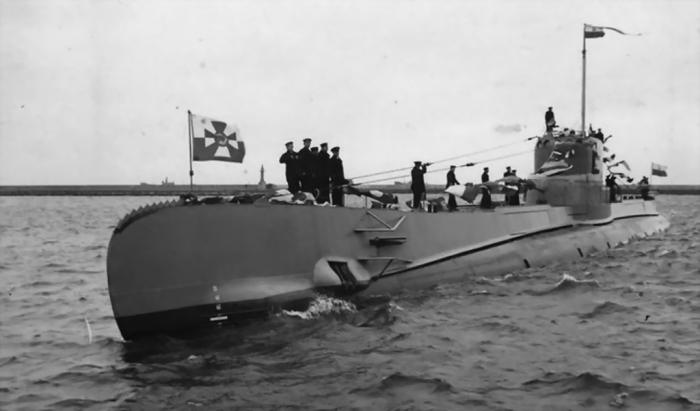
Fast Attack Craft (FAC)
The most important class of missile craft in the Polish navy are the four Tarantul class boats built in the 1980’s. These very capable ships carry 4x P-20M (SS-N-2D Improved Styx) radar or infra-red (IR) guided anti-ship missiles (ASM) with a range 44 Nautical Miles. Air defence is provided by Strela-2M (SA-N-5 Grail) MANPADS (Man Portable Air Defence System), a 76mm gun and two 30mm Gatling guns. With a top speed of 42 Knots and both electronic and physical defensive countermeasures these are very potent foes in the restricted waters of the Baltic Sea.
| Class | Pennant | Name | Status | Remarks |
|---|---|---|---|---|
| Górnik | 434 | Górnik | Active | |
| 435 | Hutnik | Active | ||
| 436 | Metalowiec | Active | ||
| 437 | Rolnik | Active |
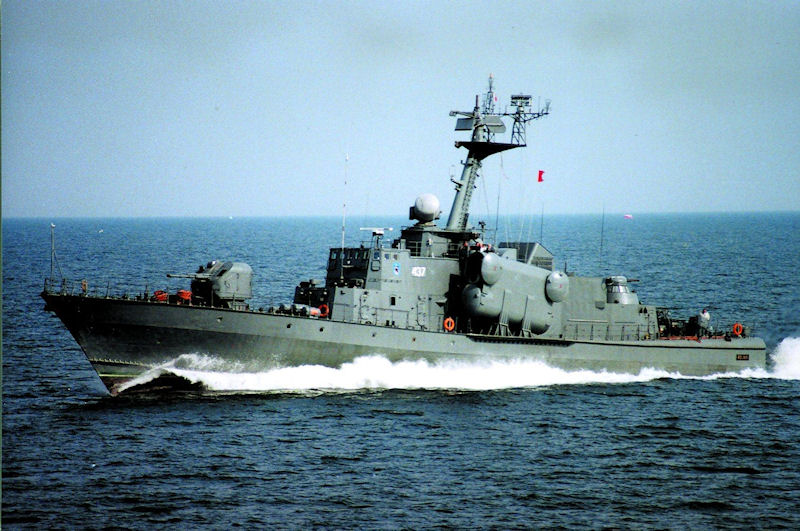
Osa I Class
These 14 ships were transferred from the Soviet Union to Poland in the mid 1960’s. In the late 1980’s the two oldest were decommissioned and placed into reserve with a third deactivating in early 1994. Additionally, three boats are scheduled for transfer to the Coast Guard but in Northern Fury, this is stalled, they are currently unmanned and unmaintained but have retained their weapons systems.
| Class | Pennant | Name | Status | Remarks |
|---|---|---|---|---|
| Osa I | 421 | Hel | Reserve | |
| 422 | Gdansk | Reserve | ||
| 423 | Gdynia | Coast Guard | ||
| 424 | Kolobrzeg | Deactivating | ||
| 425 | Szczecin | Coast Guard | ||
| 426 | Elblag | Coast Guard | ||
| 427 | Puck | Active | ||
| 428 | Ustka | Active | ||
| 429 | Oksywie | Active | ||
| 430 | Darlowo | Active | ||
| 431 | Swinoujscie | Active | ||
| 432 | Dziwnow | Active | ||
| 433 | Wladyslawowo | Active |

ASW Corvette
Kaszub
The sole ship of this class, the ORP Kaszub was designed and built in Poland with the intent of being the lead ship of seven. Problems in both the design and construction led to the decision to terminate the class, and when commissioned the ship lacked many of the weapons that were planned. The 76mm gun was fitted in 1991 but the planned SAMs (SA-N-4 Gecko) were replaced by Strela MANPADS. She also has a 35mm cannon, four 23mm cannon in twin mounts, RBS ASW launchers and torpedo tubes.
| Class | Pennant | Name | Status | Remarks |
|---|---|---|---|---|
| Kaszub | 240 | Kaszub | Active |
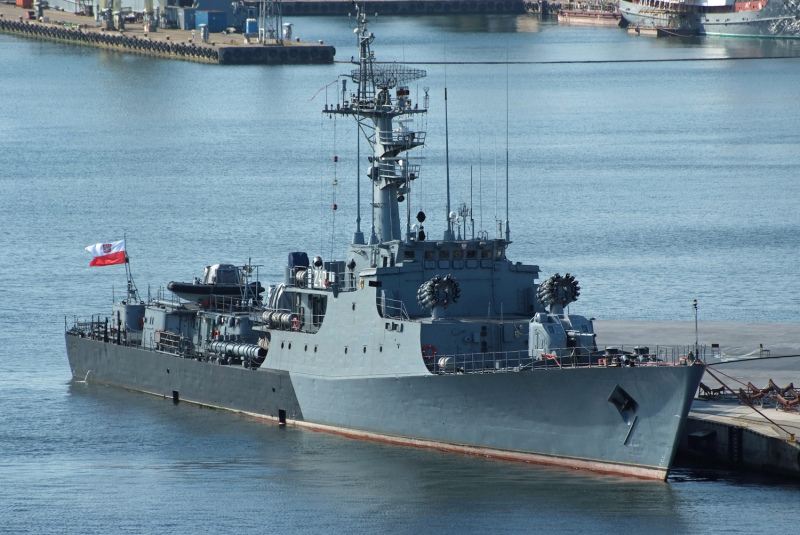
Patrol Craft (PC)/Fast Patrol Craft (PCF)
Orkan class
These three ships were designed as FAC by East Germany where their hulls were constructed. When Germany re-unified the hulls were towed to Poland for completion as PCFs, and eventually (2006) converted to their original role but certainly not for Northern Fury. With a speed of over 40 Knots, a 76mm gun, 30mm Gatling gun, MANPADS and Machine guns they are still potent little ships generally comparable to the Tarantul except for the lack of SSMs.
| Class | Pennant | Name | Status | Remarks |
|---|---|---|---|---|
| Górnik | 421 | Orkan | Active | |
| 422 | Piorun | Active | ||
| 423 | Grom | Active |
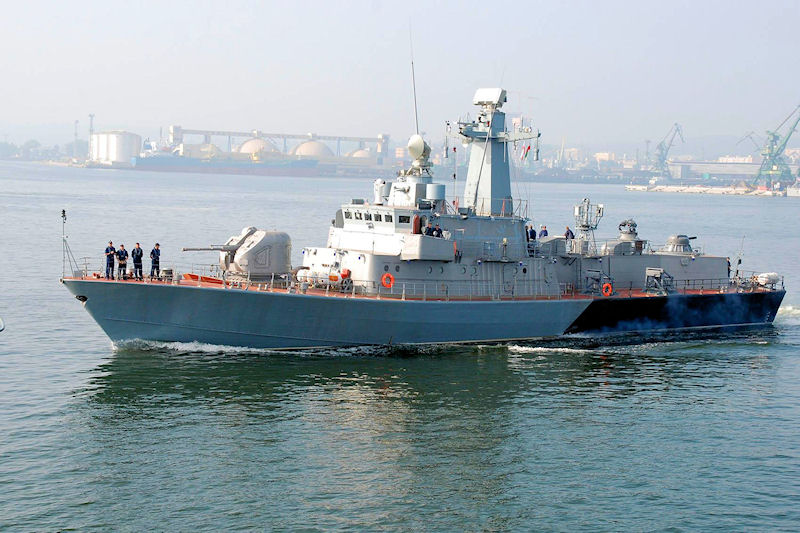
Obluze class
The 12 ships in this class are 200 Ton PC armed with two twin 30mm cannon and depth charges. Built in the late 1960’s these Polish designed ships were primarily meant for Border Guard duties and were destined for transfer to the new Coast Guard. Some are in a very poor state of repair, the final eight are sometimes called the Grozny class.
| Class | Pennant | Name | Status | Remarks |
|---|---|---|---|---|
| Obluze | 301 | Fala | Active | |
| 302 | Szkwal | Active | ||
| 303 | Zefir | Active | ||
| 304 | Zorza | Active | ||
| 305 | Tecza | Active | ||
| 306 | Wytrwaly | Active | ||
| 307 | Grozny | Active | ||
| 308 | Zawziety | Active | ||
| 309 | Zwinny | Active | ||
| 310 | Zwronty | Active | ||
| 311 | Zreczny | Active | ||
| 312 | Nieugiety | Active | ||
| 313 | Czujny | Active |
Pilica class
The 16 craft in this class are small (100 ton), fast (28 Knots), flexible and less only a decade old. Built for the Boarder Guard and with a crew of only 12-15 sailors but armed with torpedoes, depth charges, a twin 23mm cannon and potentially MANPADS, they cannot be ignored.
| Class | Pennant | Name | Status | Remarks |
|---|---|---|---|---|
| Pilica | 161 | Active | ||
| 162 | Active | |||
| 163 | Active | |||
| 164 | Active | |||
| 165 | Active | |||
| 166 | Active | |||
| 167 | Active | |||
| 168 | Active | |||
| 169 | Active | |||
| 170 | Active | |||
| 171 | Active | |||
| 172 | Active | |||
| 173 | Active | |||
| 174 | Active | |||
| 175 | Active | |||
| 176 | Active |
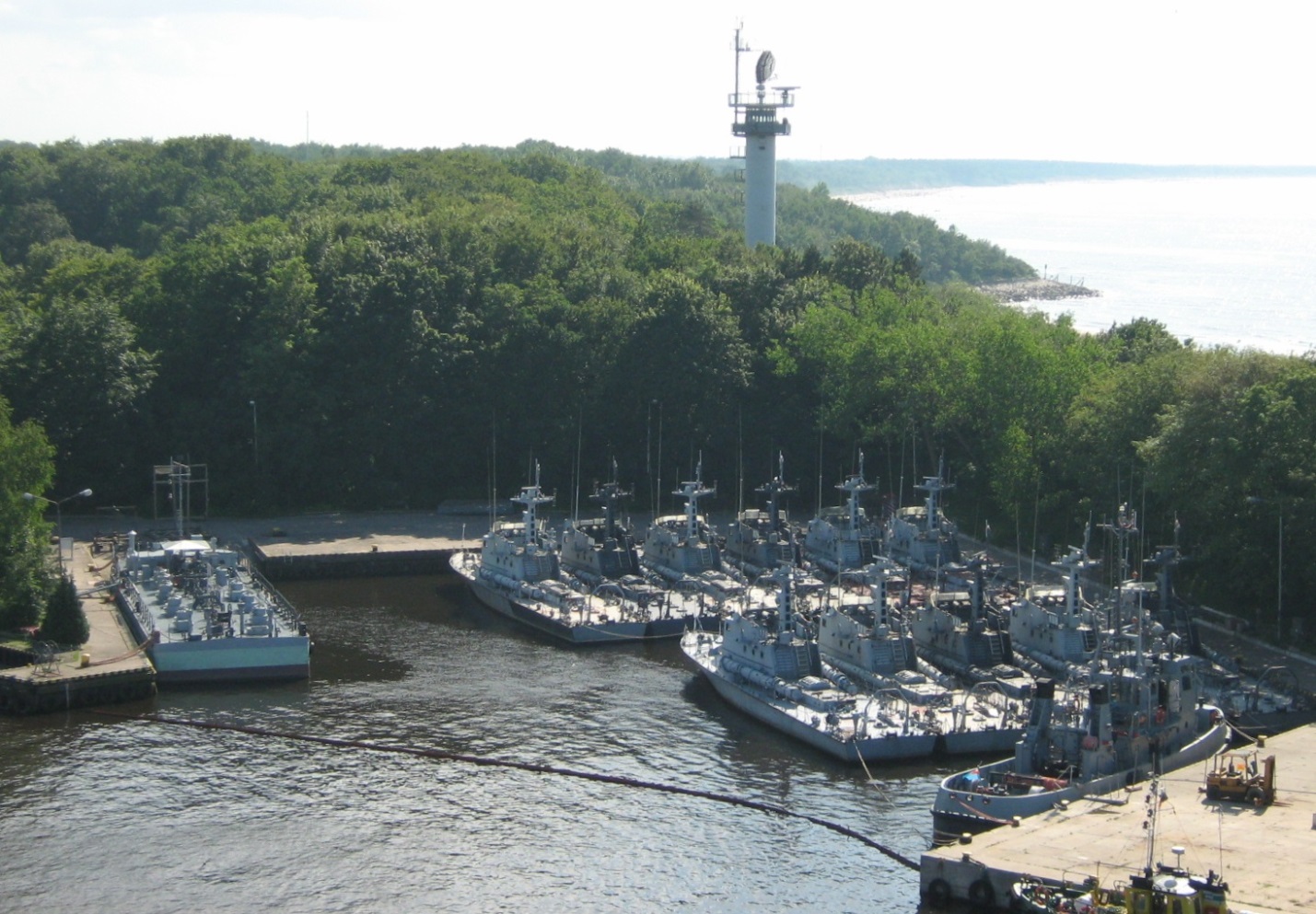
Patrol Boats (PB): About 20 craft of various designs are active with several others in reserve. These are generally small and armed with light cannon and machine guns. There are two Kaper Class which are larger but unarmed, 12 Wisloka Class, three Oksywie class, nine Gdansk class (some in reserve), and seven KP100 class in reserve.
Mine Craft (MS, ML, MCM): Mine warfare is a major threat in the shallow Baltic waters, therefore Poland has placed significant effort in this area. About 30 mine warfare ships are active while many more are in reserve. Eight Grozny class Mine Layers (ML), 13 Goplo class Coastal Mine Sweepers (MS), two Leniwka Class Coastal MS, 11 Orlik class. Those in reserve include, 12 Zubr class Mine Countermeasures vessels (MCM), and 32 K-8 class MS.
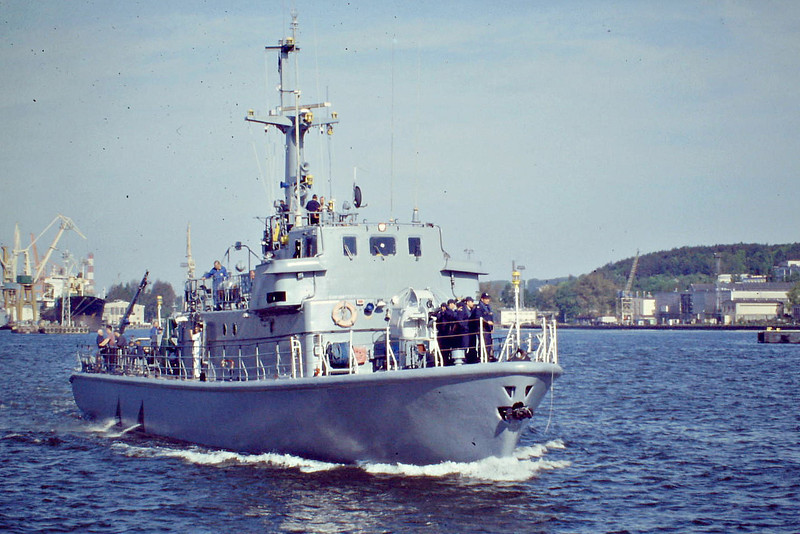
Amphibious Ships (LST, LC): Polish shipyards designed and built the Polnochny Class LSTs which is in use throughout the Warsaw Pact. Able to transport 10-12 armored vehicles, 250 troops and 250 tons of stores these ships come in three main versions (A, B, C) with a derivative command version also in use. With over 100 built by 1994 it is not surprising that Poland is a primary user of this type, and holds 26 in service, although 15 of the older ships are in reserve.
| Class | Pennant | Name | Status | Remarks |
|---|---|---|---|---|
| Grunwald | Grunwald | Active | Polnochny C Command ship | |
| Lublin | 821 | Lublin | Active | Polnochny C |
| 822 | Gniezno | Active | Polnochny C | |
| 823 | Krakow | Active | Polnochny C | |
| 824 | Poznan | Active | Polnochny C | |
| 825 | Torun | Active | Polnochny C | |
| Janow | 806 | Janow | Active | Polnochny B |
| 807 | Rablow | Active | Polnochny B | |
| 808 | Narwik | Active | Polnochny B | |
| 809 | Glogow | Active | Polnochny B | |
| 810 | Cedynia | Active | Polnochny B | |
| Gdynia | Gdynia | Reserve | Polnochny A | |
| Glogow | Reserve | Polnochny A | ||
| San | Reserve | Polnochny A | ||
| Warta | Reserve | Polnochny A | ||
| Lenino | Lenino | Reserve | Polnochny A | |
| Studzianki | Reserve | Polnochny A | ||
| Siekierki | Reserve | Polnochny A | ||
| Brda | Reserve | Polnochny A | ||
| Polichno | Reserve | Polnochny A | ||
| Rablow | Reserve | Polnochny A | ||
| Janow | Reserve | Polnochny A | ||
| Narwik | Reserve | Polnochny A | ||
| Odra | Reserve | Polnochny A | ||
| Falaise | Reserve | Polnochny A | ||
| Budziszyn | Reserve | Polnochny A |
Additionally, there are 19 smaller Landing Craft (LC); 15x Eichstaden Class (LC857-871) and 4x Deba Class (LC516-519)
